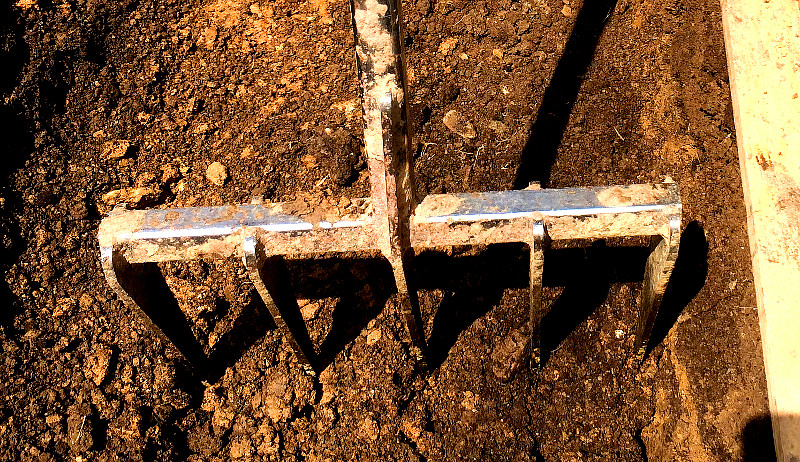
One of the most important tools on our farm is the broadfork. A broadfork is essentially an extended digging fork with several long tines on the bottom, two long handles to hold on to, and a bar to stand on that connects it all. By standing on that bar, sinking the tines into the ground and pulling back you can either flip or loosen soil with relative ease. The broadfork is generally employed for a wide array of tasks including plowing, harvesting, soil aeration and even tilling. It’s a great tool to have around, and it has many possibilities for use on the small farm.
Because they can be used in a variety of ways, but also because they can be expensive, it is important to know how you want to use your broadfork before making the financial investment. So let’s narrow it down a bit.
A Broadfork For Plowing
If you are looking at the broadfork as a way to plow up new ground, help plant trees and shrubs, or anything that involves flipping hard soil or sod, you need a sturdy one. In this case, stay away from broadforks with thin, round tines. Flipping soil requires something more substantial.
First, consider the length of the tines. Shorter tines (that is, anything shorter than 10 inches) is good for flipping sod and soil, while longer tines (anything longer than 10 inches) might dig into your subsoil, acting more like a subsoiler—the common tractor implement intended to loosen deep into the ground. That’s not a bad thing, just a preference given your soil depth and type. For plowing, I recommend looking for broadforks with tines coming straight down from the bar as opposed to coming out of the back and then down. The tines should be deep and sturdy, but sharp, too, so they can sink easily into the soil. I prefer my plowing broadforks to have metal handles as opposed to wooden handles, which can more readily break under the stress of heavy sod. Also, do not be turned off by weight. A heavy broadfork in for plowing will help you sink into tough soil. One obligatory note: You should feel comfortable lifting 50 pounds or more before investing in a heavy-duty plowing broadfork. It is generally a heavy job.
A Broadfork For Soil Aeration
The broadfork really shines in its ability to loosen deep into the soil without disturbing the soil structure too greatly, allowing plant roots to penetrate well into the garden. For this, a thin-tinned, lightweight broadfork is best. I recommend something with fairly long tines and wooden handles. The wooden handles might wear out eventually, but the added flexibility they provide will help make the broadforking element of your farming more efficient and easier. Plus, with soil aeration—which simply involves plunging the fork, pulling back slightly to loosen the soil then repeating a foot or down the row—you will benefit from having a lighter weight fork. This process is repetitive, and larger forks will wear you out much faster.
A Broadfork For Harvesting
Carrots, potatoes, parsnips and sweet potatoes are all examples of what can be harvested with the use of a broadfork. We almost exclusively use a broadfork for our carrots, and in the past we have used the broadfork for digging potatoes and sweet potatoes, all to great success. It is a slow and laborious process if you plan to harvest a lot this way, but it’s great to have a broadfork on hand for harvesting on the small farm. Either style—sturdy or lightweight—can be used for this, though good bed preparation will let you use a lighter fork for aeration as it will be easier to sink into the ground and move. If the fork is too heavy, however, it will become cumbersome when harvesting a lot of food. A medium to lightweight fork is the best here.
A Broadfork For Everything
If you plan to use the broadfork for all of the above tasks on your farm, I would consider getting something slightly heavier than the soil aerating forks, but lighter than the plowing forks (which can weigh more than 25 pounds). It can have metal or wood handles but definitely broader tines. These are what I consider “all-around” forks, and they can be quite handy to have. Of course, you lose some of the depth of a plowing fork and some of the lightness of an aerating fork, but you perhaps make up for that by having a tool you can use for both tasks with relative ease without having to buy two different forks.




